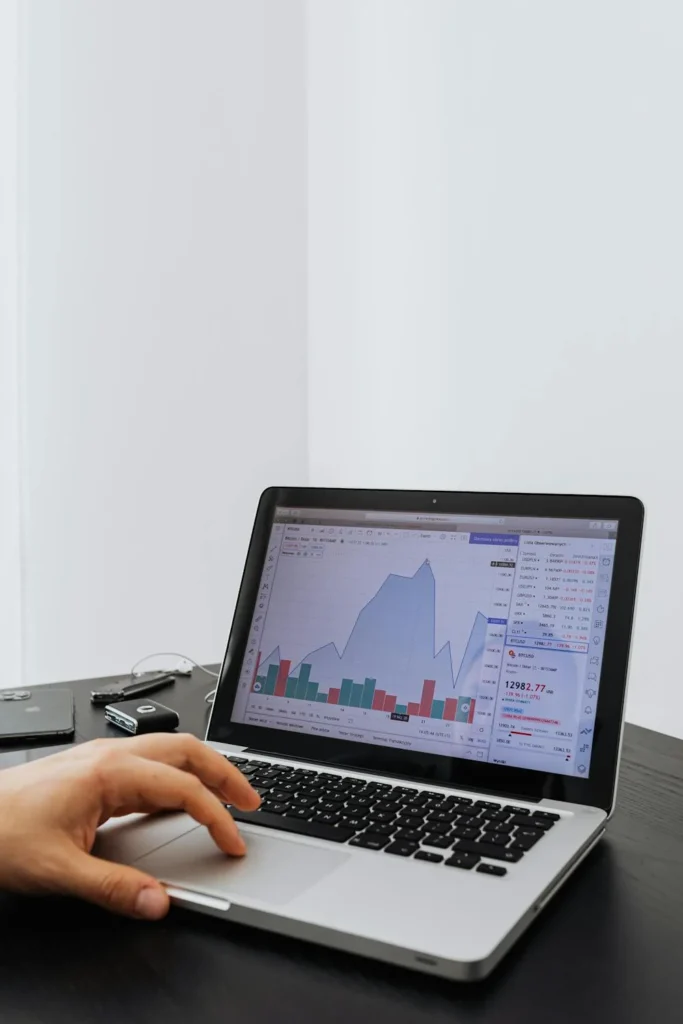
Trading demands precision, yet even seasoned professionals make mistakes. Markets shift unpredictably, and opportunities can disappear in seconds. Every decision carries weight, making it crucial to recognize and learn from common pitfalls.
Here are some common trading mistakes and how to avoid them.
Emotional Trading Decisions
Psychology drives the markets more than logic. Fear pushes traders to exit profitable positions too early, while greed keeps them in losing trades for too long. These emotions cloud judgment precisely when clarity is needed most. To avoid this, unemotional trading decisions are crucial. Successful traders not only recognize their emotional triggers but also implement strict rules to counteract impulsive behavior. Their trading plans factor in market volatility, position sizing, and risk management to minimize emotional influence. A single emotional trade can erase months of careful gains, making emotional discipline essential, especially when trading with prop firms. Expert traders often document their mental states alongside their trades, revealing patterns between psychology and performance, and helping them make more objective, calculated decisions.
Inadequate Risk Management
Most traders focus exclusively on entries while neglecting risk management. This oversight proves catastrophic. Position sizing determines survival in volatile markets. Yet many traders risk excessive portions of their capital on single trades. Risk management extends beyond stop losses. It encompasses the correlation between positions, market exposure, and account leverage. Successful traders typically risk no more than 1-2% per trade. This approach ensures survival through inevitable losing streaks. Proper risk management requires understanding market dynamics. Volatile markets demand wider stops and smaller position sizes. Calm markets allow tighter stops and larger positions. Yet many traders maintain fixed position sizes regardless of market conditions.
Overtrading and Analysis Paralysis
The relentless stream of market data presents conflicting challenges. Some traders impulsively chase every signal, leading to overtrading. Others become trapped in analysis paralysis, unable to act. Both extremes erode profits. Successful traders strike a balance with well-defined strategies. Their trading plans specify precise entry criteria, allowing them to execute with confidence. When conditions are uncertain, they prioritize capital preservation through patience. Technology intensifies these tendencies, offering limitless indicators and opinions. Social media amplifies market noise, tempting traders to react impulsively. Professionals, however, filter distractions with disciplined strategies, knowing that avoiding bad trades is more valuable than chasing every opportunity.
Ignoring Market Context
Markets operate in distinct phases. Trending markets reward momentum strategies while ranging markets punish them. Yet many traders apply single strategies across all conditions. This rigid approach guarantees failure. Understanding market context requires multiple timeframe analyses. Higher timeframes reveal overall direction whereas lower timeframes provide precise entries. Traders who ignore this hierarchy often trade against dominant trends. Market correlations add another contextual layer. Currency pairs exhibit correlated movements, commodities influence specific equities, and global events shift entire sectors. Professional traders consider these relationships before placing trades. Furthermore, failing to recognize macroeconomic factors can lead to significant losses. Interest rate decisions, inflation reports, and geopolitical events all influence market sentiment and asset values. Adapting trading strategies to reflect the prevailing market environment is crucial for consistent profitability.
Poor Trade Management
The entry marks the beginning. Management determines profit. Yet many traders neglect this crucial phase. They set stops and targets without considering market structure. This mechanical approach leaves profit on the table. Professional traders adjust their positions as markets evolve. They scale out of winners in stages. They move stops to break even when possible. These techniques maximize winning trades while minimizing risk. Trade management requires understanding price action. Support becomes resistance. Resistance becomes support. Volume indicates commitment. Traders who read these signals manage positions more effectively.
Lack of Performance Review
Every trade offers valuable feedback, providing opportunities for continuous improvement. Yet most traders avoid honest reviews. They attribute losses to bad luck while claiming skill for winners. This prevents actual improvement. Professional traders maintain detailed journals. They record setups, management decisions, and outcomes. This data reveals strengths to leverage and weaknesses to address. Regular review sessions transform mistakes into improvement opportunities. Effective performance reviews go beyond individual trades, identifying long-term patterns through monthly and yearly analysis. Seasonal tendencies become apparent. Strategy effectiveness across market conditions becomes clear. This information guides future trading decisions.
Conclusion
Trading success requires more than technical knowledge. It demands emotional control, risk management, and continuous improvement. These skills develop through conscious effort and honest self-assessment. Every market participant faces these challenges. Those who overcome them transform mistakes into stepping stones toward consistent profitability.
By: Chris Bates










